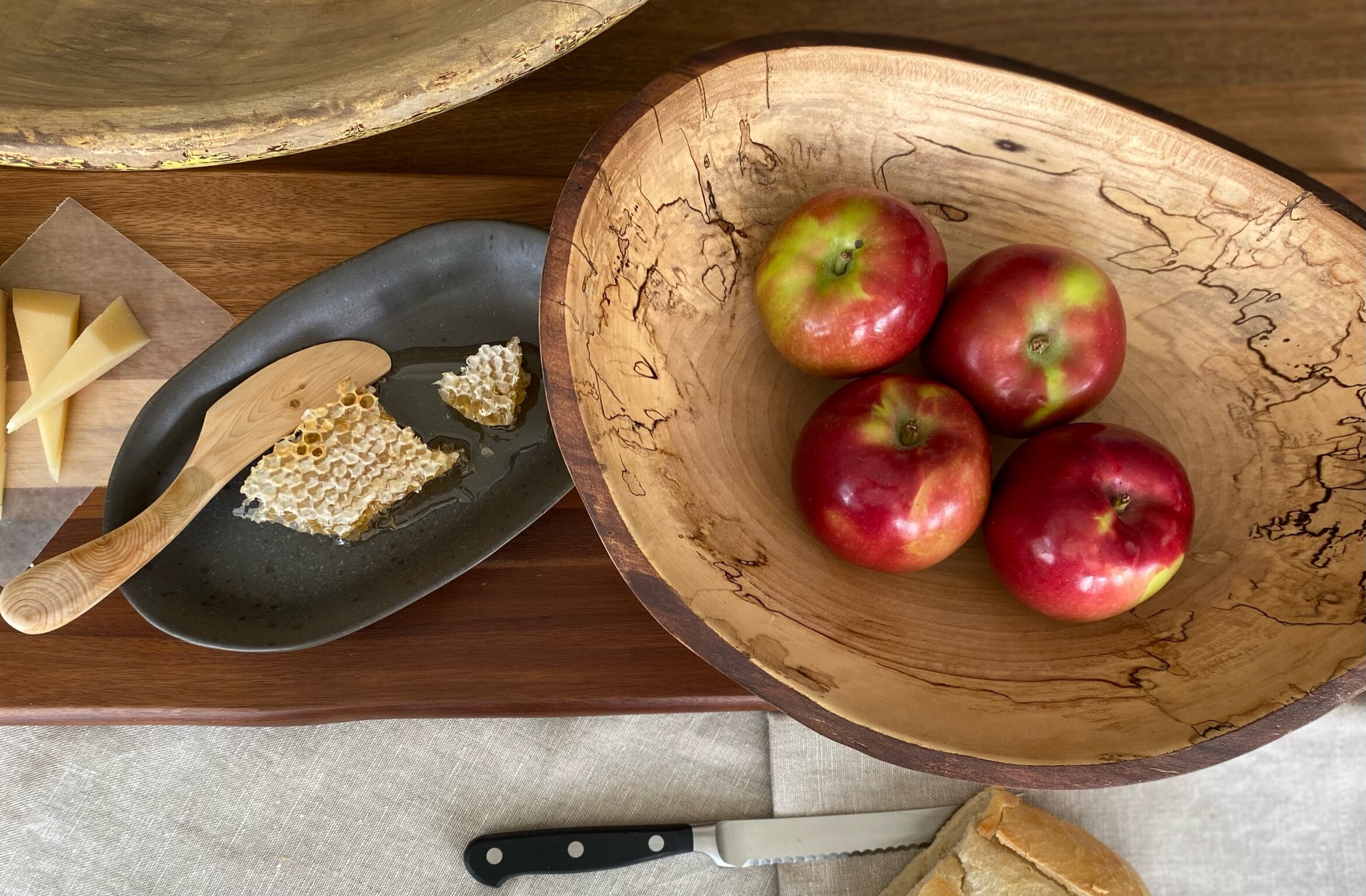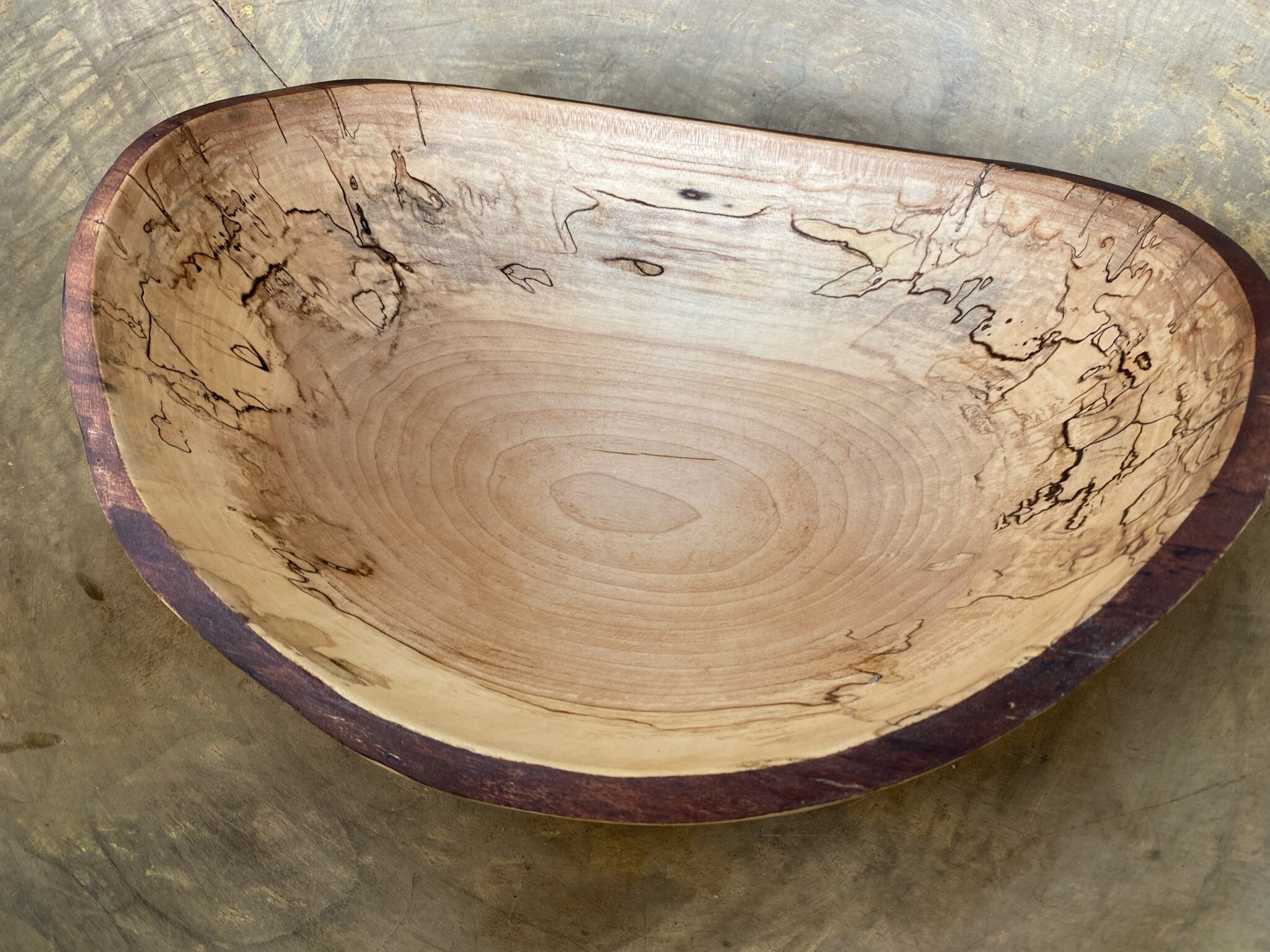Minding Our Own Business: Why Buying Locally-Made Home Goods is Important




Whether you use it for fresh fruit, sea glass and stones from the beach, keys and mail by the door, this gorgeous live edge bowl will last forever. Locally sourced from salted maple trees, fallen in Massachusetts. Handcrafted by the talented Spencer Peterman – a former basket weaver with a passion for wood working. Learn more about Spencer’s bowls and board here spencerpeterman.com.
Not-so many generations ago, buying local was the only option most people had. A drive into town for general merchandise was as routine as filling a cart on Amazon. The five-and-dime, hardware or local department store carried everything from shades to socks. Handmade furniture and decorative objects were less of a commodity, yet easily found in small communities fostered by the arts.
Fast forward to the present time when you can order the entire contents of a home without ever stepping foot into a brick and mortar. Or any connection at all to the people behind the design. Meanwhile, pandemic home makeovers have tightened the focus on the toxic implications of “fast furniture”, as the industry faces an environmental reckoning. Online orders soared for large-footprint retailers, while small local shops have struggled to stay in business.
Sourcing goods and services from our local, often family-owned, businesses seem like a salient solution for a recovering economy, and for those that wish to answer the earth’s call for eco-responsible consumerism, right? But if low-cost and convenience informed our decisions to buy from mammoth vendors, what might drive us to look around to our town, state, or surrounding states for the things we need? And what is your return on that investment?
COMMUNITY CONNECTION + LOCAL ECONOMY
Holistically, when folks shop local, they contribute to the greater good of their own neighborhood. If a business thrives, shop owners may hire a local accountant or contractor. They may hire more employees, who then frequent other shops and restaurants in the area. Money that circulates and stays in your town or state has a compelling impact on the local economy, trickling down to the overall enrichment and community development. This is especially true when skilled craftsmen and emerging artists have a platform to share their work, and that work is both celebrated and utilized in our homes. The circularity of this system also lends, in essence, to human involvement and connectedness.
ENVIRONMENT
Local companies may be more sustainable by way of small batch production, non-toxic material, less packaging, and other practices that ultimately conserve energy and lessen the carbon footprint. It’s important to understand, however, that just because something is locally produced does not mean it’s environmentally friendly. The truth is not all shops are invested in sourcing their inventory from local makers or mindful about the materials used, so a lot of responsibility lies on the shoulders of the consumer. If the demand for sustainably-made furniture and textiles increases, so does the probability of eco-friendly options.
For the discerning shopper who prefers custom designs that haven’t been mass produced, or simply favors eco-friendly home goods, look here to learn about brands that can help you create interesting and stylish rooms without abandoning environmental cause.
SELECTION
Here’s another return on your investment: smart, independently owned shops tune into the needs and wants of their community. Knowing the customer can guide selection of inventory, variety, and price. Fatigued by the same-old? Purveyors of artisan made products are your bridge between unique designs and over-produced materials. The same may be true for some chain stores with keen ethics on fair trade and sustainable materials. While fair trade products are often made in developing countries and not always locally sourced, offering a mix of items through well-vetted manufacturing partnerships is a way to ensure social, economic, and environmental standards for the things you bring home.
Tips for the Best Finds:
Be curious about the kind of merchant you’re buying from. Well before handing over your hard-earned cash for expensive items like furniture, don’t limit your research to product performance. How far does the piece have to travel to get to you? Check websites to learn about company values, how they give back, or how transparent they are about their origin of their products.
Small town boutiques may not have websites, but don’t be shy about asking a shop owner to point out locally made items. The inquiry will inform their business of customer interests, and allow you to make an informed decision about your purchase. When we know better, it’s easier to invite meaningful, long-lasting objects into our home space, regardless if they are decorative or purely functional.
Found objects in this photo: a primitive birthing stool (vintage shop) and styled with a Jonathan Adler’s Muse bowl (secondhand décor shop), and art books (used book store) – a curated vignette that lend a little personality to contemporary setting.
IS SHOPPING LOCALLY MORE EXPENSIVE?
Custom orders and small boutiques can certainly come with a higher price tag, but there are viable options for clever shoppers on a budget.
Quality over quantity: prioritizing the essential is conducive to creating elegant spaces in your home that are both budget and eco-consciousness. Minimalist design is vital to timeless interiors that don’t often need to be refreshed in order to stay relevant.
Consider your local vintage or antique furniture shops, which may also carry newer, high quality (but gently used) pieces for less.
Need a gift idea? Gift cards are lovely way to support the local shops and help take the edge off the cost of higher-priced items.
Local markets are the best way to discover art and beautifully crafted pottery, wood accents, and textiles – often more affordable when bought directly
For large re-design projects, family owned business near you may offer or negotiate better deals on materials/services than big box stores will, not to mention better service.
Buying as close to home as possible nurtures and connects us to community, stimulates the local economy, and gives the consumer an opportunity to select interesting and meaningful things that make a house a home.

